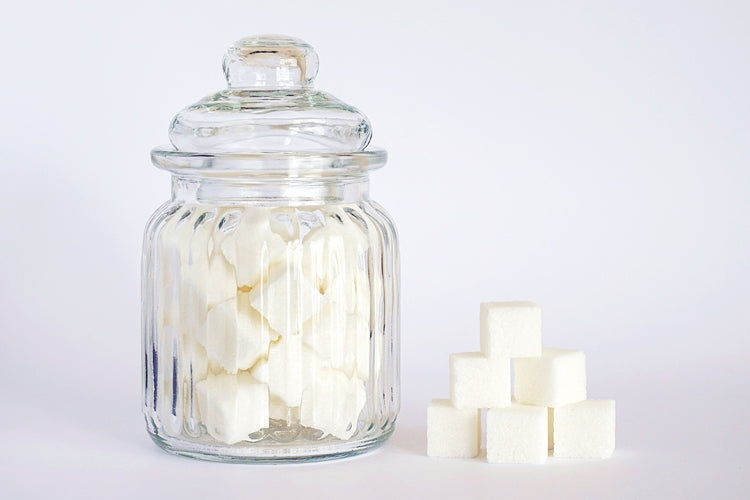Beet Sugar vs Cane: Which Sugar Is the Right Choice for Baking?
Beetroot Sugar Vs Walking Cane: Which Sugar Reigns Supreme in Your Kitchen?
The selection in between beet sugar and walking cane sugar typically mirrors not only individual preference yet additionally the culinary needs of certain dishes. Cane sugar is frequently applauded for its rich, intricate flavor that improves baked products, while beetroot sugar supplies an extra neutral sweetness that might fit a selection of applications. Nevertheless, the differences expand beyond flavor profiles to origins and dietary facets, raising questions regarding their corresponding functions in modern kitchen areas. Which sweetener absolutely should have an area of honor in your culinary collection? The response may stun you as we check out these subtleties better.
Origins of Beet Sugar
Beetroot sugar, acquired from the sugar beetroot plant (Beta vulgaris), has a rich background that dates back to the late 18th century. The initial effective extraction of sugar from beets happened in Germany around 1747, when chemist Andreas Marggraf identified the plant's sugar content. By the early 19th century, the procedure was fine-tuned and advertised, resulting in the facility of beet sugar factories across Europe.
The increase of beetroot sugar was considerably influenced by geopolitical factors, particularly the Napoleonic Battles, which interrupted cane sugar products from the Caribbean. This triggered European countries to invest in beetroot sugar manufacturing as a domestic choice. The establishment of the sugar beet industry offered an economic increase to rural areas, creating tasks and boosting agricultural methods.
Origins of Walking Stick Sugar

By the 7th century, sugar walking cane was introduced to the Center East, mainly as a result of the growth of Islamic empires. The modern technology for refining sugar from walking cane juice progressed during this duration, causing the facility of massive sugar production. The Campaigns further helped with the introduction of sugar to Europe, where it became a desirable luxury item by the 12th century.
The substantial need for sugar in Europe caused the facility of ranches in the Caribbean and South America throughout the colonial era. This marked a transforming factor in sugar production, transitioning from a high-end excellent to an essential product, essentially forming cooking practices and economic situations worldwide.
Flavor Profiles Comparison
While both beetroot sugar and walking stick sugar serve the very same main feature as sugar, their taste accounts exhibit subtle distinctions that can influence cooking applications (beet sugar vs cane). Walking stick sugar is commonly thought about to have a somewhat more intricate taste, characterized by a hint of caramel notes that can boost the preference of baked goods and confections. This depth is credited to the existence of trace minerals and natural substances that are extra pronounced in cane sugar because of its natural processing approaches
On the other hand, beet sugar often tends to have a cleaner, a lot more uncomplicated sweetness with less taste complexity. It is frequently referred to as having a somewhat metallic aftertaste, which may be less desirable in particular delicate meals or beverages. This distinction becomes particularly significant in dishes where the the original source sugar's flavor may contend with various other ingredients, such as in fruit preserves or fine pastries.
Eventually, the option in between beetroot sugar and walking cane sugar might boil down to individual choice and the particular requirements of a recipe. For those seeking a nuanced taste to enhance their cooking developments, walking stick sugar might be the preferred alternative, while beet sugar acts as a functional and functional option in several applications.
Nutritional Differences
Nutritionally, both beetroot sugar and cane sugar are nearly the same, mainly composed of sucrose and offering the very same calorie material. Each type of sugar consists of approximately 4 calories per gram, making them equivalent in energy contribution when utilized in food and beverages - beet sugar vs cane. This similarity includes their chemical structures, which contain glucose and fructose molecules bound together
While the key dietary worth of both sugar is essentially the very same, some small Click This Link variations exist in trace element. Walking cane sugar might have percentages of potassium, calcium, and magnesium, while beet sugar is typically lacking these nutrients. Nonetheless, the quantities existing are minimal and do not substantially impact total nutritional intake.
It is necessary to keep in mind that neither beet sugar nor walking stick sugar supplies any substantial wellness benefits; they are best consumed in moderation as component of a well balanced diet regimen. Excessive intake of any type of sugar can add to wellness concerns such as excessive weight, diabetes, and dental troubles. When taking into consideration nutritional differences, the focus must remain on small amounts and overall dietary patterns rather than the minute differences between beet and cane sugars.
Cooking and Baking Makes Use Of
When it involves cooking and baking, both beetroot sugar and walking stick sugar can be made use of mutually in a lot of dishes as a result of their similar chemical composition and functional buildings. Both sugars are composed mainly address of sucrose, which indicates they will certainly offer the exact same level of sweetness and add to the Maillard reaction, important for browning and taste growth in baked goods.
In baking, both beetroot and walking stick sugars can be used in cookies, cakes, and breads without affecting the structure or structure of the end product. There are subtle distinctions in preference; some bakers argue that cane sugar offers a slightly cleaner sweetness, while beetroot sugar may pass on a more durable taste.
For food preparation applications, both sugars carry out similarly well in dressings, sauces, and marinates, boosting flavors without changing the designated outcome. In addition, they can be used in candy-making processes, where precision is crucial, as both sugars take shape likewise.

Final Thought
In summary, both beetroot sugar and walking stick sugar possess distinct origins and taste accounts that influence their cooking applications. Walking cane sugar's complicated, caramel-like notes enhance the taste of baked products, while beet sugar uses a tidy sweet taste appropriate for a wide array of meals.
Cane sugar is regularly commended for its abundant, complex taste that boosts baked products, while beetroot sugar supplies an extra neutral sweet taste that might fit a selection of applications.Beet sugar, derived from the sugar beet plant (Beta vulgaris), has an abundant history that dates back to the late 18th century.While both beet sugar and walking stick sugar serve the exact same primary function as sugar, their flavor accounts show subtle differences that can influence culinary applications.In recap, both beet sugar and cane sugar possess unique origins and flavor accounts that affect their culinary applications. Walking stick sugar's facility, caramel-like notes improve the flavor of baked goods, while beet sugar offers a clean sweetness appropriate for a wide variety of meals.